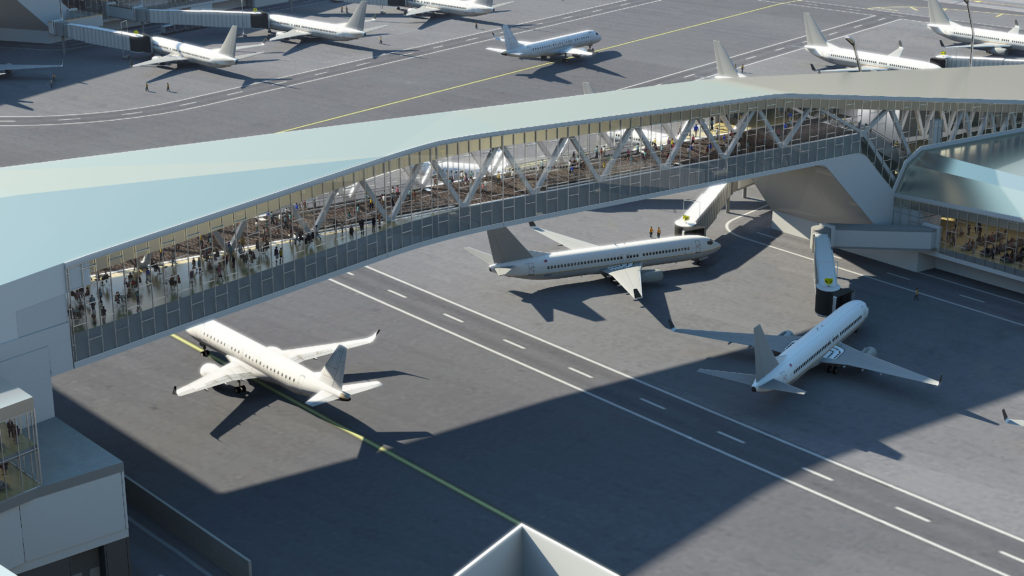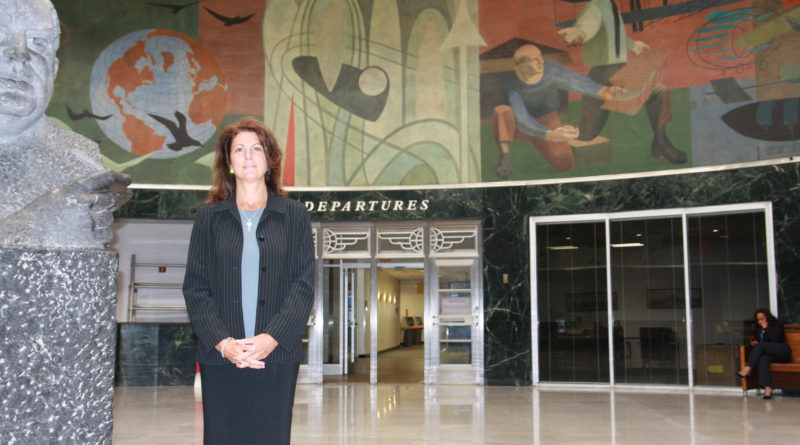Taking flight: Inside LGA’s major transformation
With two of the nation’s busiest airports, as far as the rest of the world is concerned Queens is the transportation hub of New York City. And one of those airports is undergoing a major renovation, as it’s transformed into a completely new facility equipped to meet the demands of 21st century air travel.
“This is the 20th busiest airport in the country, but it terms of size on a per acreage basis, we’re probably one of the busiest in the world,” Lysa C. Scully, who has been General Manager of LaGuardia Airport (LGA) for the last three years, told This Is Queensborough. “This is going to be the best and only new airport built in the United States in the last 20 years.”
According to estimates by the Federal Aviation Administration (FAA), by 2030 LGA needs to move 34 million passengers annually. Today, the airport is handling just under 30 million travelers yearly. The trick is how to accommodate those extra passengers without increasing the number of flights or extending the runways.
“We are slot restricted here, so we cannot increase the number of flight operations,” explained Scully. “The only way to meet the forecast, which then drives economic development, is by providing the opportunity for larger aircraft. The existing terminal and existing ramp areas are undersized for the aircraft of today and of the future.
“We wouldn’t be able to grow to the number of passengers that are necessary,” she added. “In terms of economic development, for every million passengers we cannot accommodate, we lose the opportunity to create 4,000 jobs.”
Much of the visible work that is currently underway at LGA is part of Phase 1, or the complete replacement of today’s Central Terminal with Terminal B. The $4 billion project is spearheaded by LaGuardia Gateway Partners, a joint venture between Vantage Airport Group, Meridiam Infrastructure and Skanska USA.
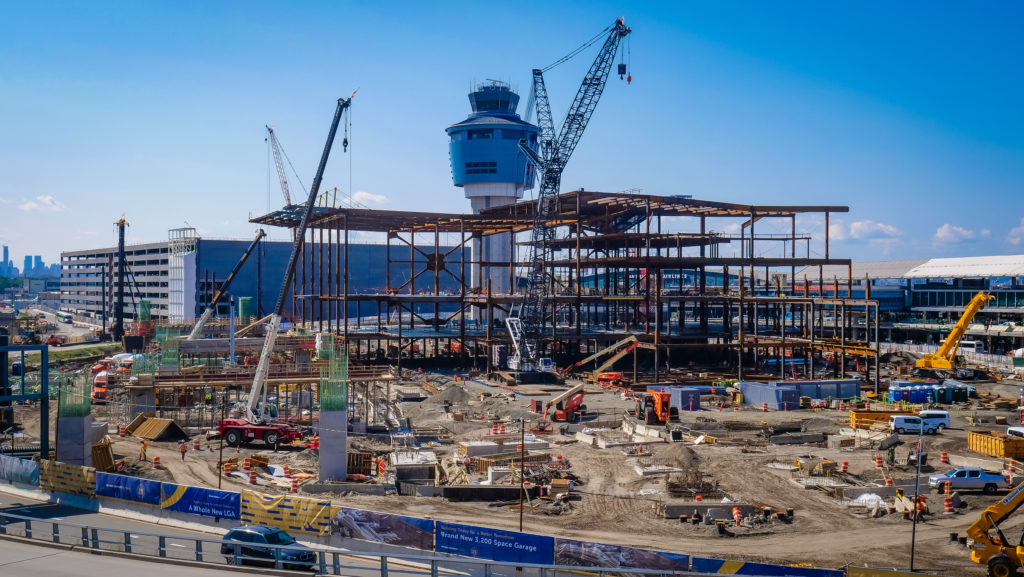
When the Central Terminal was built in 1964, it was designed to handled 8 million passengers annually. In 2015, it served 14.3 million people, or approximately half of LGA’s total passengers. To meet the FAA’s estimates, Terminal B will one day need to handle 17.5 million travelers.
And it won’t be long before air travelers begin using the new Terminal B. The first of its two concourses is set to open by late summer of 2018. This past summer ground was broken on Phase 2, a project to replace the current Delta Terminal with a new Terminal C, which will include four new concourses. Delta is overseeing that $4 billion project itself.
Unlike the current airport configuration, the two new terminals and six concourses will one day be connected.
“Ultimately, this is all designed to give us a whole new airport,” said Scully. “It’s two phases, but our customer will see one terminal end to end and one experience end to end. Visually it will present as one airport, and it should be.”
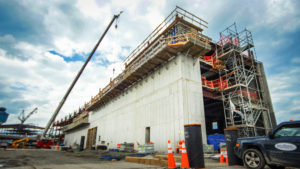
Connecting those six concourses and two terminals will be a series of bridges designed to allow aircraft to move underneath. Aside from being a cool experience for travelers – they will be the first of their kind in the world – the design actually serves a practical function by allowing for expanded taxiways at the airport to facilitate the movement of aircraft.
“Today, you can often be sitting on an aircraft waiting to get to a gate because the aircraft that is there has to actually be towed out,” said Scully. “All of these developments will ensure that aircraft can power in and out on their own.”
And despite the massive project, LGA is still open for business. “One of the things that we’ve been very strong on, and a commitment that [Governor Andrew Cuomo] and the executive leadership of the Port Authority made, is that we want to make sure that we don’t interrupt flight operations through this,” said Scully.
However, the project hasn’t been without some difficulties. Many will remember the traffic nightmares on the Grand Central Parkway and the roads leading into LGA when construction first began last year. But adjustments and improvements, including a new exit from the airport that feeds between 600 and 1,000 cars per hour directly onto the parkway, have helped alleviate those issues.
“What we did right away was a very targeted focus on managing land-side construction on a daily basis,” Scully explained. “We put into effect a command center that is open six days a week, 18 hours a day. We are using that each and every day so that when we make a change on the roadways, they’re seeing what the impact is and mitigating in advance of any issues.”
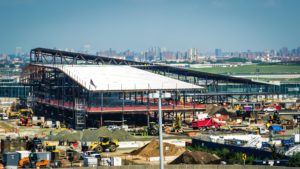
While phases one and two are clearly defined and underway, there is a potential third phase in the works. Governor Andrew Cuomo has stated publicly on several occasions his desire for an AirTrain connecting the airport with the 7 subway stop and Long Island Railroad at Willets Point.
Scully said there are a number of factors at work with such a project, and all of them are currently being analyzed. Those findings and recommendations could be before the Port Authority board by the end of the year.
“There are a number of factors, if they all come to the right agreement point, that would provide a terrific opportunity,” she said. “There’s a thought about a consolidated rental car facility there and employee parking, things that today are very complicated because we’re so landlocked and we’re very respectful to the community.”
Remaking LGA into a modern-day airport has been an idea that has been out there for a number of years, but Scully credits Governor Cuomo for being the catalyst behind making it a reality.
“Conceptually, the project has been in development for quite a long time, but it really required the advocacy of the governor to really get it moving forward,” she said, referencing Cuomo’s announcement in 2015 about his desire to see the project through. “Once it got that support, it was really ready to go.
“There’s no better time to be at LaGuardia Airport,” Scully added. “This is an awesome time because of what we’re doing for Queens and the State of New York. It’s not just about making those customers that come today feel better because they should, but it is about helping the region grow and continue to be economically viable.”
